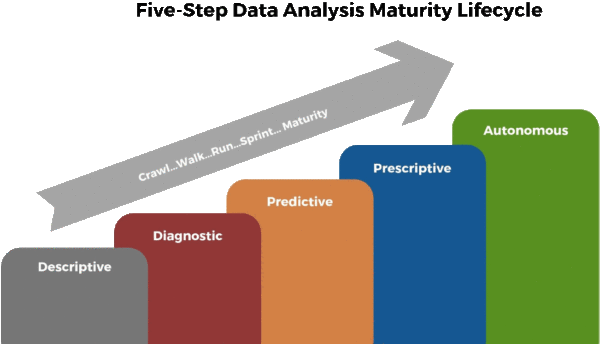Getting to the stage where your business processes and decision-making are “data-driven” sounds appealing. After connecting all your data sources to the necessary artificial intelligence and machine learning mechanisms, you can just flip the switch: Decisions are made for you, and changes to business processes to meet customer needs can run automatically.
But is that a stage you actually want your business to advance to? As an analogy, are you ready to sit in the back seat of your car and trust it will self-drive to your destination? The technology is available today that enables cars to transport people safely and take the quickest route possible on their own. But are you ready to let go of control?
Instead of aspiring to become data-driven, many businesses prefer to reach the stage where they are data-informed. In other words, leverage AI and machine learning to predict what will happen and prescribe the actions to take in light of those predictions—but still allow humans to make the final decision on what course to follow. Humans would also continue to drive the ship.
Going back to the car analogy, being data-informed is like utilizing Waze or Google Maps to tell you which route to travel, or having your car alert you when the vehicle ahead of you suddenly brakes. You still retain the right to take an alternate route, and only you can push the gas, step on the brakes, and turn the wheel.
Whichever data stage your business aspires to, it’s important to take a phased approach as to how you process your data. It’s impractical and often a recipe for failure if you just jump to trying to be data-informed or data-driven—without first accomplishing the key steps that come first.
To build a data-informed or data-driven business, here’s a rundown of the step-by-step analytics process. Your business may need to evolve following these five methodical phases:
The order of these data analytics phases is critical. It’s what we call the “Crawl…Walk…Run…Sprint” data maturity lifecycle—where you progress through each phase before you attempt the next. The successes of each step also create a foundation for building out the subsequent phases so that you can learn how your business needs to process data and invest incrementally to spread out your system costs over time.

The first step in completing the data maturity lifecycle is to evaluate where you’re currently at within the five-step process. Your level of data analytics maturity will likely be different across business units and the database systems within each business unit.
To get a sense of where your systems stand, consider the attributes those systems currently exhibit:
The level of data analytics maturity that is best for a particular database system, business unit, or an enterprise will vary according to what works well for each entity and the available budget to invest in the required technologies. The long-term goal of most businesses will be to reach the prescriptive data-informed phase.
Whether to go all the way to the data-driven autonomous state will likely come down to how comfortable the senior management team is with the available technology and how predictable processes and outcomes are for the specific function. Humans are often swayed by emotions, and gut feelings are wrong just as often as they are right.
Computers, however, remove all the emotion and base their prescriptive actions only on the logic built-in by the business as well as the historical and future trends. It all comes down to who, or what, you trust most to run your business profitably. Your management team will need to carefully consider its course of action.
Check out our Data & Analytics Services and contact us at atx@atxadvisory.com